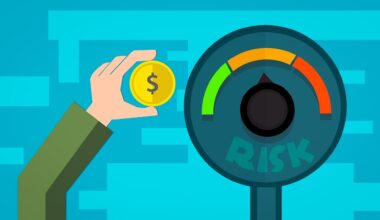What Happens to Your 401(k) When You Retire?
The 401(k) plan is a common retirement savings vehicle that allows employees to save a portion of their salary before taxes are deducted. When you reach retirement age, you face important decisions regarding your 401(k) funds and their future. Understanding these options is vital for optimizing your retirement strategy. First, it’s essential to determine what you want to do with your 401(k) upon retirement. Many individuals choose to leave their funds in the existing plan, often benefiting from continued tax-deferred growth. Another option is to roll over your 401(k) into an Individual Retirement Account (IRA), which can provide more investment options and lower fees. However, if you opt to withdraw the funds directly, it could result in taxes and penalties, diminishing your retirement savings. Before making any decisions, consult a financial advisor to explore the best options tailored for your unique financial situation. This way, you can ensure that you are managing your savings wisely and taking full advantage of whatever plan you choose.
Leaving Your 401(k) Plan as-is
One option that retirees have is to leave their 401(k) funds in their employer’s plan. This decision often appeals to those who wish to maintain a hands-off approach regarding their retirement savings while enjoying continued tax benefits. However, it’s essential to review the plan’s conditions, as some plans require payment of required minimum distributions (RMDs) by age seventy-two. Remaining in the 401(k) allows your money to grow tax-deferred; however, this approach also requires you to consider whether your plan’s fees and investment options meet your long-term needs. It may also limit your access to new investment strategies that could yield better returns for your retirement nest egg. Therefore, ensure that the benefits of the existing plan outweigh the simplicity of leaving it untouched. Conduct regular assessments of your savings needs and market conditions to determine if this remains the best option for you in the long run. Remember, each investor’s journey is unique, and what works well for one may not suit another.
Rolling Over Your 401(k) to an IRA
Another viable choice is rolling over your 401(k) into an IRA. This transfer can enhance your control over your investments, with many options available for various asset classes. Moving to an IRA allows retirees to create a diversified portfolio tailored to their risk tolerance and retirement goals. Importantly, the rollover process maintains the tax benefits associated with the funds, allowing for continued tax-deferred growth. However, moving funds needs careful consideration. Check both your 401(k) plan and the IRA provider for any fees associated with the rollover, as they can significantly impact your savings over time. Additionally, choose between a traditional or Roth IRA, each of which has distinct tax implications upon withdrawal. Before making your decision, evaluate your current investments to ensure a smoother transition. Many financial institutions provide resources and support to facilitate rolling over your 401(k), offering better opportunities for growth depending on your investment strategy.
An often overlooked option is cashing out your 401(k). While it might seem attractive due to immediate access to funds, this choice comes with drawbacks. Direct withdrawals typically incur income taxation and an additional 10% early withdrawal penalty if you are under age 59½. This means a substantial portion of your retirement savings could evaporate due to these deductions. If you find yourself tempted to cash out, consider the risks carefully. Once the funds are withdrawn, you lose the potential for growth through tax-deferred returns. Additionally, you’ll face new taxation responsibilities and may find yourself financially unprepared for retirement. Opting for cash-out may jeopardize your long-term financial health. Therefore, it’s crucial to evaluate your immediate cash needs against your overall retirement goals. If possible, take a step back and analyze your other savings and investment options before making this significant retirement decision.
For retirees who are uncertain about their investment choice, taking a strategy of partial withdrawals might offer an optimal balance. This approach allows you to withdraw a portion of your 401(k) gradually while leaving the remainder to grow. This strategy offers the flexibility of generating income streams without completely depleting your retirement savings. Make sure to structure your withdrawals strategically to maintain a tax-efficient income flow that minimizes your tax liabilities and maximizes your available funds over time. Review your required minimum distributions (RMDs) to ensure you’re not withdrawing unnecessarily from your retirement accounts. This method provides some liquidity while allowing your remaining investment balance to continue working for you. Consult with a financial advisor about the recommended amount to withdraw annually when considering this route. A professional can provide insights to align your withdrawal strategy with your retirement needs and help you maintain sufficient funds throughout your retirement years.
Understanding Required Minimum Distributions (RMDs)
As you approach retirement, it’s critical to familiarize yourself with required minimum distributions (RMDs), which apply to traditional 401(k)s and IRAs. The IRS mandates these distributions once you reach age seventy-two, requiring withdrawals to prevent tax deferral indefinitely. Understanding RMD rules is crucial to avoid hefty penalties, as failing to withdraw the required amounts can lead to harsh taxation up to 50%. To calculate your RMD, you typically divide your account balance by a life expectancy factor derived from IRS tables, which varies based on age or beneficiary status. Preparing for RMDs is a significant aspect of retirement planning; thus, keeping track of your accounts is essential. Evaluate your financial needs and expected lifestyle to plan efficiently around your RMDs. Additionally, having a strategy for managing your withdrawals will help ensure you do not jeopardize your financial stability in the years to come. Consulting your financial advisor can ensure compliance with RMD rules while maximizing your retirement benefits.
The role that taxes play upon retirement cannot be overstated. Depending on your overall financial strategy and income levels during retirement, your 401(k) withdrawals are subject to tax at ordinary income tax rates. To avoid unpleasant surprises during tax season, retirees should develop a comprehensive tax strategy that considers their various income sources, including Social Security and pensions. Engaging in proactive tax planning is paramount, particularly for those with substantial retirement accounts. Retirees might consider diversifying their income streams by balancing Roth IRAs with their traditional 401(k)s, which may lead to tax-free withdrawals in the future. Furthermore, it’s prudent to monitor tax law changes that could impact your retirement strategy. Ensure you have a financial strategy that aligns with current regulations and anticipates shifts in tax legislation. By crafting a thoughtful tax strategy, you can maximize your retirement savings, allowing your hard-earned money to sustain you effectively.
Finally, remember to regularly review and adjust your retirement planning strategies, including your 401(k). Life’s changes, economic shifts, and evolving financial goals will prompt necessary adjustments to your retirement strategy. Stay informed of investment options and market conditions to make better financial decisions that can enhance your retirement security. It helps to set specific review periods, such as annually, to reassess your portfolio allocations and overall retirement strategy. Your financial advisor can guide the circumstances affecting your retirement savings, keeping you on track. Taking a proactive approach not only ensures sustainable growth but also builds a robust retirement strategy that aligns with your goals and needs. In short, keeping your strategies aligned, transparent, and adaptable is paramount for a comfortable retirement. It is about achieving financial independence and enjoying the rewards of your career-long efforts.


